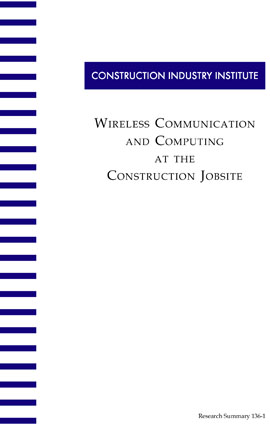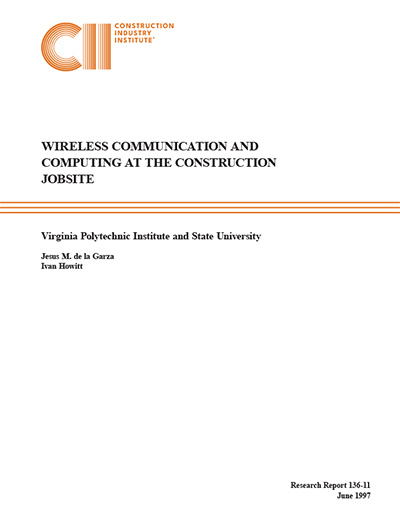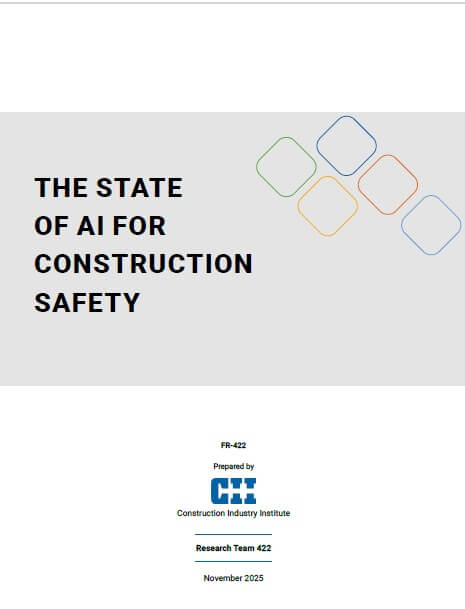
Wireless Communication and Computing at the Construction Jobsite
The walkie-talkie, a World War II technology, is synonymous with the construction industry. Today’s wireless communications technologies, however, have the potential to enable the transmission of all project information instantaneously to the foreman’s work station. Database management systems can link the engineering office to the foreman’s desk and allow, for example, the latest drawing revisions to be viewed and discussed immediately with the field personnel who will execute the changes.
Wireless communication technologies, the transmission of voice, video, and data without the use of wire linkage, are capable of enabling on-demand access to all project information by all parties at any location. The technologies include the use of cellular phones, mobile phones, personal and portable computing devices, video communication, voice clips, faxes, and modems. Such capabilities were investigated by the CII Wireless Computing and Communications Research Team. The research team was formed to assess the applicability of wireless communication technology to the construction industry. The specific objectives were: to survey the information needs at the jobsite; to survey the emerging wireless communications technologies; and to assess the extent to which wireless data technology can fulfill the information needs of jobsites.
This publication is a summary of the efforts by the research team. It describes the available technologies and discusses the particular applications that can enable cost-effective decisions to be made for a particular job. Ultimately, wireless communication technology will improve the important issues of reliability and quality that are so vital to the engineering and construction facilities of today.



